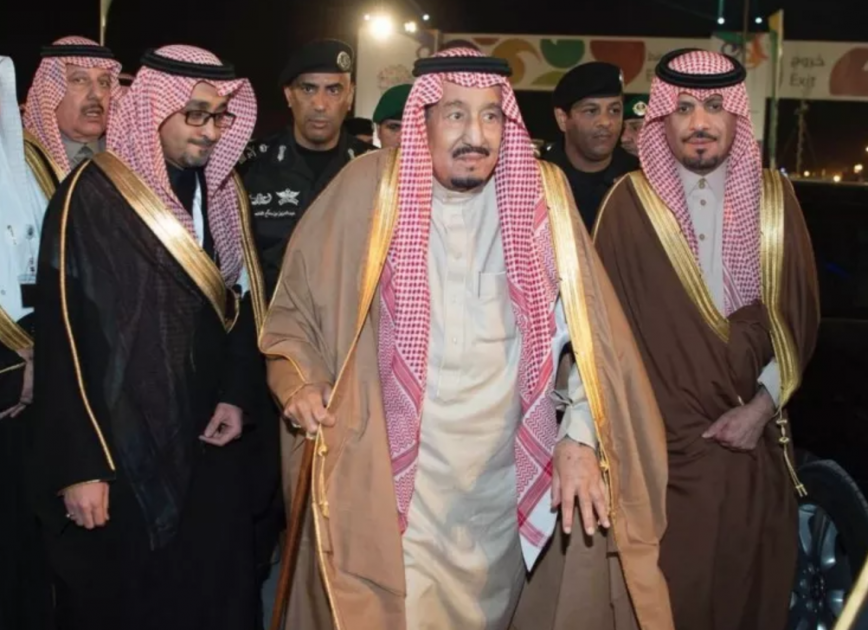
King opens MiSK Charity, India pavilions
Custodian of the Two Holy Mosques King Salman inaugurated the pavilions of MiSK Charity, Ministry of Energy and Industry and Mineral Resources as well as that of India, the guest of honor country, at the Janadriya village near Riyadh on Wednesday evening.
Upon arrival at the pavilion of MiSK Charity, the King was received by Secretary General of MiSK Charity Badr Al-Assaker and other officials.
King Salman toured the pavilion and was briefed on the pavilion’s interactive platform about charity and the fields of empowerment of young men and women in the areas of education, technology, innovation, culture, arts and creative and technical media.
Then, the King headed to the pavilion of the Ministry of Energy, Industry and Mineral Resources where he was received by Minister Khalid Al-Falih and a number of officials. The monarch toured the pavilion and listened to a briefing on the displayed projects of Saudi Aramco, Saudi Electricity Co.
(SEC), King Abdullah City for Atomic and Renewable Energy, Royal Commission for Jubail and Yanbu, Saudi Basic Industries Corporation (SABIC), Saudi Geological Survey, Maaden Co., King Abdulaziz City for Science and Technology, Saudi Industrial Development Fund, King Abdullah Center for Petroleum Research and Studies, National Program for Development of Industrial Clusters, Saudi Export Development Authority, and the Saudi Industrial Property Authority (MODON).
The King oversaw the ceremony of signing of the energy purchase agreement between ACWA Power and SEC for the Sakaka Solar Project.
King Salman then moved to the Indian pavilion where he was received by India’s Minister of External Affairs Sushma Swaraj, Ambassador to the Kingdom Ahmed Javed and other officials.
The King watched the photo gallery highlighting the history of the distinct relations between Saudi Arabia and India and the bond of friendship.
The pavilion also showcased many tourist destinations in India as well as the cultural, social and traditional exhibits that reflect the rich culture and heritage of India.
The pavilion includes corners for Indian perfumes, weaving, Arabic calligraphy and manuscripts, embassy building in Riyadh with several books, a yoga complex and an exhibition of Indian industries (Make in India) featuring some of the automotive, space and satellite industries, food and weapons industry, as well as the theater where some Indian folk dances were performed.



























